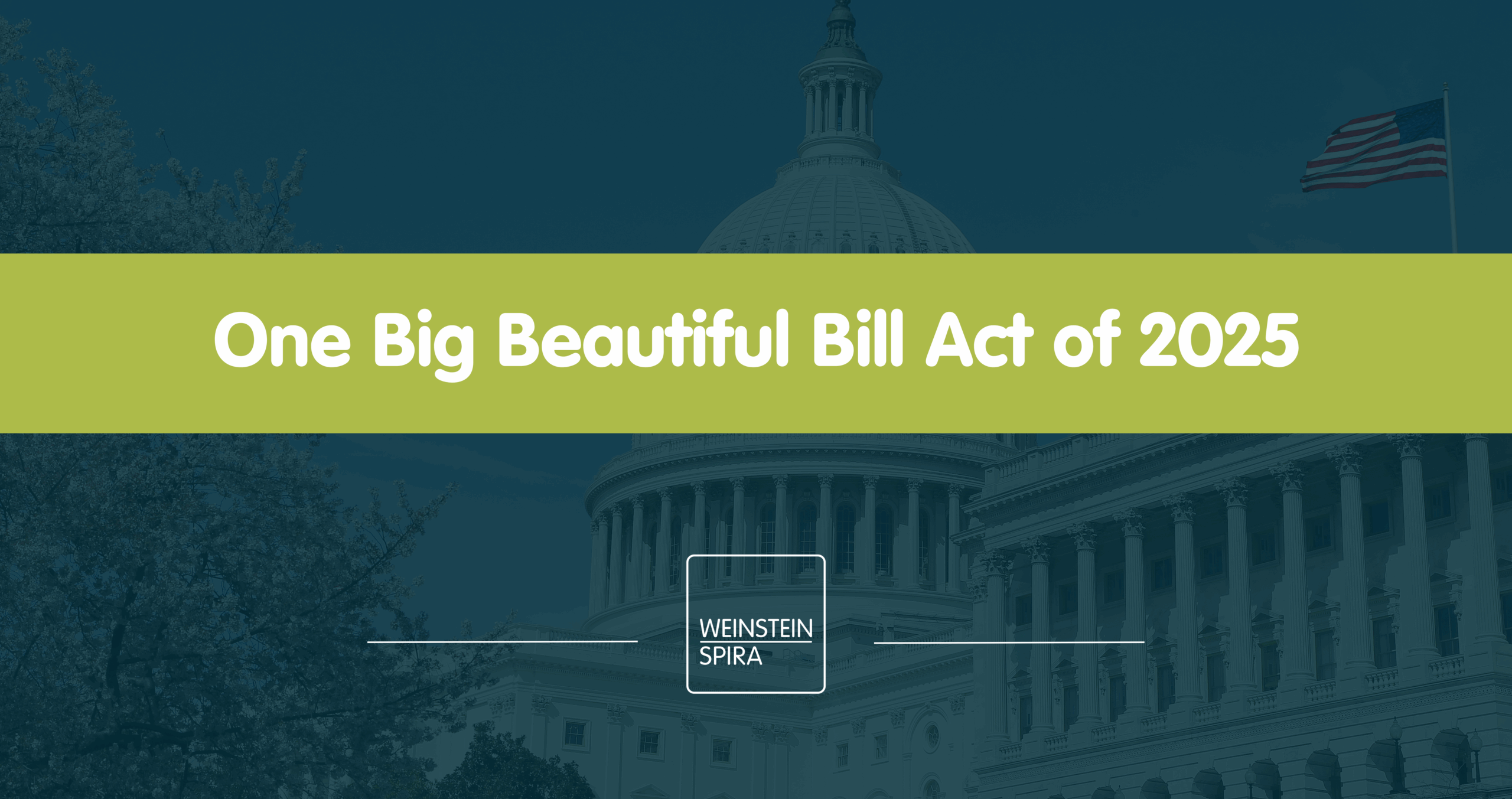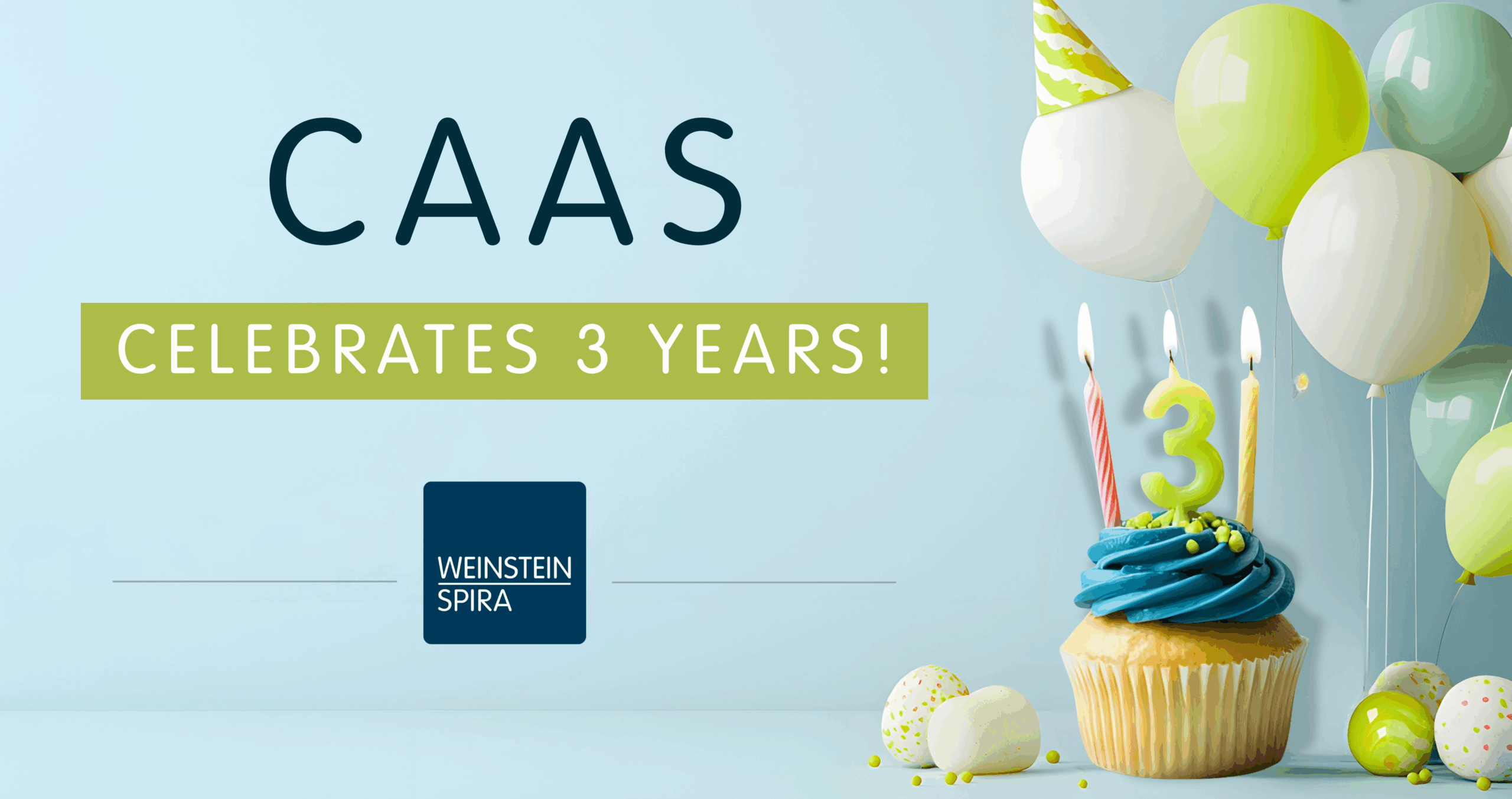Meeting the planned July 4th deadline, the One Big Beautiful Bill Act of 2025 (OBBB) has been officially signed into law. The bill extends and expands the individual income tax provisions of the Tax Cuts and Jobs Act (TCJA), continues select business tax measures and incorporates several of President Trump’s campaign proposals. To offset some of the cost, it reduces benefits related to green energy, increases taxes on multinational corporations, and limits funding and tightens access for several social safety net programs. The Joint Committee on Taxation estimates the legislation will decrease federal revenue by approximately $4.5 trillion from 2025 through 2034.
This blog outlines the major tax provisions for individuals and businesses included in the legislation.
Major Tax Provisions
At its core, the OBBB expands and extends many of the tax cuts originally introduced in 2017, maintaining and broadening many key tax provisions.
Permanent Provisions Affecting Individuals:
- Tax Rates and Brackets: Makes the TCJA’s lower individual rates permanent, with an additional year of inflation adjustment for the 10%, 12% and 22% brackets. The maximum individual tax rate remains at 37%.
- Standard Deduction: Locks in higher standard deductions starting in 2025 ($31,500 for married filing jointly (MFJ), $23,625 for head of household (HOH), $15,750 for single filers), indexed for inflation).
- Personal Exemption: Permanently eliminates the personal exemption.
- Child Tax Credit: Makes the TCJA child tax credit permanent, raising the maximum to $2,200 in 2026, indexed for inflation, with phaseouts at $200,000 for single taxpayers ($400,000 MFJ).
- Mortgage Interest: Keeps the $750,000 cap on the mortgage interest deduction.
- Itemized Deductions:
- Limits casualty losses to federally declared disasters.
- Repeals miscellaneous itemized deductions (except educator expenses).
- Limits moving expense deductions to military and intelligence personnel.
- Replaces the Pease limitation with a cap on the value of itemized deductions, limiting the benefit to 35 cents per dollar for top-bracket taxpayers.
- Limits gambling losses to 90% of losses, deductible only against gambling gains.
- Alternative Minimum Tax (AMT): Maintains the higher exemption permanently, resets phaseouts to 2018 levels ($500,000 for single filers, $1 million for MFJ, indexed for inflation) and increases the phaseout rate from 25% to 50%.
- Achieving a Better Life Experience (ABLE) accounts: These are tax-advantaged savings and investment accounts designed for individuals with disabilities. This legislation raises the age for disability onset to 46 and makes 529-to-ABLE rollovers permanent.
- Above-the-Line Charitable Deduction: Creates a permanent $1,000 ($2,000 for MFJ) deduction for charitable giving by non-itemizers.
- Charitable Contribution Floor: Itemized charitable deductions are allowed only to the extent they exceed 0.5% of adjusted gross income (AGI).
- Student Loans:
- Starting in 2026, replaces multiple income-driven repayment plans with a standard plan and a new Repayment Assistance Plan (RAP) that includes minimum payments and longer forgiveness timelines.
- Makes permanent the exclusion for student loans discharged due to death or disability (requires a Social Security Number (SSN)).
- Adoption Credit: Enhances the credit by making up to $5,000 refundable, indexing it for inflation, and removing carryforward limits on the refundable portion.
- Dependent Care Assistance Program (DCAP): Raises pre-tax contribution limits to $7,500 per year ($3,750 for married filing separately (MFS).
- 529 Plans: Expands eligible uses to include more kindergarten through 12th grade and postsecondary costs; allows a $35,000 lifetime rollover to Roth IRAs under certain conditions.
- Repeal of Certain Green Credits: Ends individual Inflation Reduction Act credits like electric vehicle (EV) & residential energy credits.
- EV tax credits expire on September 30, 2025.
- Residential energy credits expire December 31, 2025.
Temporary Provisions Affecting Individuals:
- Senior Deduction (2025–2028): Provides a $6,000 standard deduction for seniors aged 65 and older ($12,000 for MFJ). Phased out starting at $75,000 income for single filers and $150,000 for joint filers; fully phased out at $175,000 and $250,000, respectively.
- Higher State and Local Tax (SALT) Deduction Cap (2025–2029): Raises the cap to $40,000 in 2025, increasing by 1% annually through 2029. Phases out for taxpayers with income above $500,000. Reverts to $10,000 after 2029.
- Tip Income Deduction (2025–2028): Allows deduction of up to $25,000 of tip income for workers in traditionally tipped industries. Phased out starting at $150,000 ($300,000 for MFJ).
- Overtime Premium Deduction (2025–2028): Allows deduction of up to $12,500 ($25,000 for MFJ) of overtime pay. Phased out beginning at $150,000 ($300,000 for MFJ).
- Auto Loan Interest Deduction (2025–2028): Permits deduction of up to $10,000 of interest on auto loans for new cars assembled in the United States. Phased out above $100,000 ($200,000 for MFJ).
- Trump Accounts (2025–2028): Creates automatic, government-seeded savings accounts for children born from 2025 to 2028. Includes a $1,000 federal seed deposit and a $5,000 annual contribution limit. Funds may be used for education, homeownership or entrepreneurship.
- Scholarship-Granting Organization Donation Credit (2026–2029): Provides a nonrefundable federal tax credit equal to the greater of 10% of AGI or $5,000 for donations to qualified scholarship-granting organizations. Caps donations at $5 billion in 2026 and $4 billion annually thereafter. Available for donations made from 2026 to 2029.
Estate Tax Provision:
Permanently increases the estate and lifetime gift tax exemption to $15 million for single filers and $30 million for joint filers beginning in 2026, indexed for inflation.
Permanent Provisions Affecting Businesses:
- Bonus Depreciation: Permanently reinstates 100% bonus depreciation for short-lived assets placed in service after January 19, 2025.
- Research and Development (R&D) Expensing: Permanently restores immediate expensing for domestic R&D beginning in 2025; small businesses may retroactively expense back to after December 31, 2021.
- Interest Limitation: Permanently returns to an earnings before interest, taxes, depreciation and amortization-based cap on net interest deductions.
- Section 179 Expensing: Increases the limit to $2.5 million (indexed for inflation) with phase-out starting at $4 million, effective after December 31, 2024.
- Section 199A Pass-Through Deduction: Makes the 20% deduction permanent, widens phase-in and guarantees a $400 minimum deduction for taxpayers with $1,000 or more in qualified business income (QBI) who materially participate.
- Corporate Charitable Contributions: Imposes a permanent 1% floor on corporate charitable deductions.
- Employer-Provided Child Care Credit: Permanently increases the credit to 40% (50% for small businesses), raises caps to $500,000–$600,000 (indexed) and broadens eligibility to pooled and third-party care.
- Qualified Opportunity Zones: Permanently extends and restructures zones with 10-year designations, tighter eligibility and a rural focus. Maintains deferral with basis step-up after 2026.
- Qualified Small Business Stock (QSBS): Enhances exclusions (50% to 100% tiered by holding period), raises the gain cap to $15 million and increases the corporate asset limit to $75 million (both indexed).
- Excess Business Loss Limitation: Extended through 2025, with a threshold of $313,000 or $626,000 for joint filers.
- Clean Energy Provisions:
- Repeals certain credits (hydrogen after 2027, commercial buildings 179D one-year post-enactment, clean electricity credits after 2027 except some renewables).
- Adds foreign entity of concern (FEOC) restrictions and excise taxes on wind and solar projects using FEOC content.
- Modifies phaseouts and restrictions for nuclear, carbon capture, advanced manufacturing and clean fuel credits.
- Publicly Traded Partnerships: Expands qualifying income to include hydrogen storage, carbon capture, advanced nuclear, hydropower and geothermal.
- Intangible Drilling Costs: Requires inclusion of intangible drilling costs in adjusted financial statement income.
- Form 1099 Reporting Threshold: Raises the threshold from $600 to $2,000 annually.
- Excise Tax on Stock Buybacks: Increases the excise tax from 1% to 2% on repurchases by publicly traded corporations.
Temporary Provisions Affecting Businesses:
- Clean Fuel Production Credit (45Z): Extends the clean fuel production credit through 2030. Expands eligibility for qualifying fuels and facilities and introduces stricter rules near the end of the period, including new restrictions on foreign entity content.
- Qualified Production Property: Allows a 100% first-year depreciation deduction for certain nonresidential real estate used in manufacturing, processing, or production. Applies to property where construction begins after January 19, 2025 and before January 19, 2029, and that is placed in service before January 1, 2031.
International Tax Provisions:
- Revised Terminology and Rates: Renames Global Intangible Low-Taxed Income (GILTI) to Net Controlled Foreign Corporation Tested Income (NCTI) and Foreign-Derived Intangible Income (FDII) to Foreign-Derived Deduction Eligible Income (FDDEI). Sets both rates at approximately 14%, increases Foreign Tax Credit (FTC) limits and eliminates the Qualified Business Asset Investment (QBAI) component.
- Base Erosion and Anti-Abuse Tax (BEAT): Increases the rate to 10.5% while maintaining current credit rules.
New Taxes
To help offset the cost of the tax reductions outlined above, the legislation introduces several new taxes:
- Excise Tax on Remittances: Imposes a 1% excise tax on cash remittances sent abroad. Exemptions apply to transfers made through United States banks and payments made by debit or credit card.
- Private University Endowments: Increases the excise tax on large private university endowments from 1.4% to 8%. Introduces an additional 8% tax on student-adjusted endowments for certain private colleges, exempting institutions with fewer than 3,000 full-time students.
- Excess Compensation Tax: Expands the Section 4960 tax on excess compensation to apply to any employee of qualifying tax-exempt organizations earning over $1 million, not just the five highest-paid employees.
Cuts to Health and Food Assistance
The OBBB includes reductions to social safety net programs to help fund the tax relief:
- Medicaid: Lowers provider tax limits from 6% to 3.5% and expands work requirements to include adults with children over the age of 14.
- Supplemental Nutritional Assistance Programs (SNAP or formerly known as food stamps): Tightens work eligibility rules and reduces funding levels.
A Higher Debt Ceiling
To support this comprehensive package, the OBBB raises the federal debt ceiling by approximately $5 trillion. This increase is intended to prevent an immediate default and provide the federal government with the necessary borrowing capacity needed to meet existing obligations and implement the new tax and spending measures.
The Bottom Line
The One Big Beautiful Bill Act of 2025 enacts comprehensive changes to federal tax and spending policy. It establishes permanent tax relief for individuals and businesses, introduces targeted support for seniors and service workers and restructures healthcare and nutrition assistance programs. The legislation also substantially increases the federal debt limit to accommodate its fiscal measures. Together, these changes are expected to have long-term effects on government policy and household finances.
Please contact Weinstein Spira with specific questions regarding the OBBB.



